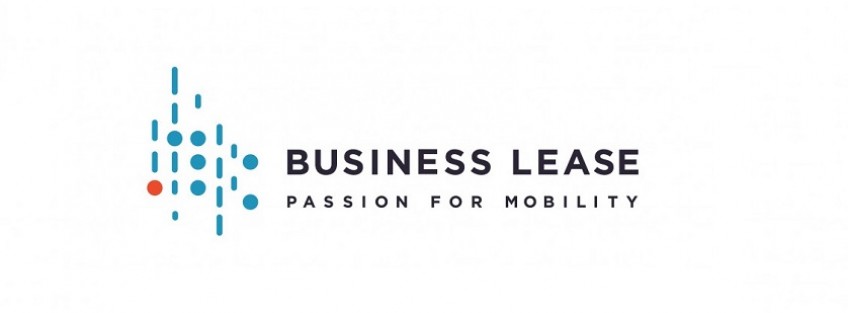Mobility News by Business Lease - March 2022
Wed | 30.03.2022
Operational Leasing
Most of the times we tend to focus on preparing our vehicles more for winter and less for summer. Nevertheless, the change of the season calls for your special attention. We asked a professional to see what we need to do to prepare our vehicle in good running conditions and to keep our costs as low as possible.
1. What do we need to consider when preparing our car for the summer?
The first and most important thing is to replace the winter tires with the summer ones. Winter tires must be stored properly until the next season. Secondly, we can make a general technical check – this can be done by the user as well – we check the oil level in the engine, the proper functioning of the ventilation system (AC) – potential unpleasant odors, if the other liquids are at the correct level. If we consider we cannot do these properly on our own, we call a specialist for a quick check, which should not take more than 30 minutes.
2. Why do cars need our attention when changing the season?
As any other good that may in time suffer any impairment, it is necessary to pay attention to the car not only when there is a change of season, and better said, not only from time to time, but always. But when we have the change of season this becomes mandatory, and it is important to take the necessary steps to be prepared. As previously mentioned, the most important aspect is the one related to the replacement of the winter tires with the summer ones, as this is primarily a safety measure for the user - the performance of the tires influences the performance of the car as a whole – for example the distance required to stop the car in case of using the emergency break.
3. Where do we look when we want to save costs related to maintenance, tires, and repairs?
First of all, it is important to pay attention to any sign the car sends – today there are extremely few cars that do not have high performance technical systems that transmit us through the dashboard warning lights and/or through the messages on the display, information about the technical status of the car. Thus, it is important to pay attention to these messages and not to ignore them – ignoring these messages may result in extremely high costs for the owner or the user.
This means that when we talk about saving costs, the best approach is prevention.
4. Are there any driving tips that might help you save fuel, reduce repair expenses in this season (respectively summer)? What can Car Fleet Managers do to educate their drivers?
In order to reduce fuel consumption as well as to keep maintenance costs under control, there are several things we could consider:
· Make sure that the tire pressure is always correct
· Do not overfill the fuel tank
· Do not fill or, better said, do not store in your car things that are not used or used only extremely rarely
· Go to the service workshop when necessary (periodically) to replace the necessary filters
· Use the autopilot/cruise control when driving on the highway
· Select the appropriate gear
· Don't drive aggressively
· Reduce your driving speed in the city
· Don't speed up unnecessarily
· Anticipate driving
In what concerns the Fleet Managers, the solutions are multiple – first of all, there must be a clear Fleet Policy available to all users. Secondly, to monitor the driving behavior* of the users and when deviations above the average are noticed these must be discussed both with the user (there may be a good reason) and his/her superior. Deviations may be highlighted by the (GPS) reports that can show how a person drives, but also by the estimates received from the service workshops that can show an aggressive driving style and/or an inappropriate use. Don’t forget asking your leasing company for help.
* Recently a new product has been launched which tracks driving behavior, the Safe Drive Pod. This is a safety device that has 3 main functionalities:
- Safe Driving – offer information about driving behavior
- Focus – offer the possibility, while driving, to switch off all messaging functionalities (optional)
- Emergency – in case of an accident the device transmits a signal to another person announcing the event
The pod will be placed inside the car and will send info to a dedicated mobile application. The application records automatically, there is no need to switch on or off as long as the phone has the Bluetooth function on. And very important, this system is not a GPS (the location and the trip it is not seen, the pod functions like a gyroscope).
Of course, there are also other actions that may be considered, such as defensive driving courses and training sessions with specialists in the automotive industry that can provide us with insights and different tips & tricks.
5. There is an increase in the demand for EV’s. Do they need special treatment? What should companies consider?
Indeed, the demand for electric and/or hybrid cars and commercial vehicles compared to the previous years has increased considerably – this is visible both from the perspective of the figures presented at the end of 2021 by the representatives of the Association of Car Manufacturers and Importers – if at the end of 2020 this segment represented 7.1% of the total number of new registrations, by the end of 2021, we see that the percentage has increased considerably to 15.5%.
Obviously, the transition to an alternative solution of electric and/or hybrid type also comes with new challenges – this refers to the way in which the cars must be cared for – in this regard I would like to mention that it is extremely important that the maintenance and repair operations must be carried out in specialized locations that have both the necessary knowledge and the tools for these interventions (technical system and SDVs).
As in the case of a car that uses classic fuels, we also need to pay attention to the dashboard lights and the messages transmitted by the vehicle computer.
6. What is the impact on a company when a car from the fleet is stuck in service?
The answer to this question can be seen from various perspectives, although it is obvious that in the end everything comes down to costs.
I'm saying that everything comes down to costs because locking a car in service for a longer period does not strictly affect the budget to spend set for that car, but also blocks the user. Regardless of the way in which that car is used and here I am referring to the particularities of a commercial vehicle where it is obvious that it is much easier to quantify the losses brought for example by the non-delivery of the goods sold either in time or at all or to the use of a car by one of the sales agents (where the quantification of the losses can be slightly more difficult) it is clear that in the end the company is the one that gets to have a much higher cost. Therefore, prevention is the one that helps us to minimize the costs both direct and those associated with use.
Mircea Ungureanu, Head of Operations Services Business Lease Romania is passionate about cars and has worked all his career life in the automotive industry. He’s gained experience both in sales and operational field, which helps him see and understand better the point of view of all parties involved – from the customer/user to suppliers and internal customers (colleagues in other departments).
This article was provided by our Mobility Partner, Business Lease Romania.
2025
-
November (1)
-
October (1)
-
September (1)
-
July (1)
-
June (1)
-
April (1)
-
February (2)
-
January (1)
2024
-
November (1)
-
October (1)
-
July (1)
-
May (1)
-
March (1)
-
February (1)
-
January (1)
2023
-
November (1)
-
September (2)
-
August (2)
-
June (1)
-
May (1)
-
April (2)
-
March (1)
-
February (2)
-
January (2)
2022
-
December (3)
-
November (4)
-
October (3)
-
September (4)
-
August (3)
-
July (6)
-
June (4)
-
May (4)
-
April (8)
- Marketing News by diARK - April 2022
- Finance News by Mazars Romania - April 2022
- Experience the Perfect Chauffeur Transfer with David Intercar
- Mobility News by Business Lease - April 2022
- NRCC MEMBER IN SPOTLIGHT, WOLTERS KLUWER
- Crowe Romania and DeclaratiaUnica.ro engage in the automation of the single return form and the offering of personalized consultancy
- Cryptocurrency News by Bitcoin Romania, April 2022
- Legal News by BBW LAW - April 2022
-
March (6)
-
February (4)
-
January (5)
2021
-
December (3)
-
November (4)
-
October (2)
-
September (2)
-
August (1)
-
July (5)
-
June (3)
-
May (5)
-
April (4)
-
March (7)
- Cryptocurrency News by Bitcoin Romania, April 2021
- HR News by CNA International Executive Search Romania, March
- Real Estate News by CTP Invest, March 2021
- Sale-Purchase of Agricultural Land Located Outside Build-Up Areas
- MEET THE NRCC BOARD CANDIDATES 2021
- Fleet Management – Complete Makeover or Small Adjustments?
- Cryptocurrency News by Bitcoin Romania, March 2021
-
February (5)
-
January (6)
2020
-
December (2)
-
October (2)
-
September (3)
-
August (2)
-
July (6)
- NRCC Member in Spotlight Interview - Autonom
- Insolvency Proceedings: New Rules
- Member in Spotlight, UniCredit Bank
- Financing opportunities overview for large enterprises, SMEs and other organizations
- Companies: Simplification of Formalities
- Call for Leaders | What is your readiness score to benefit from the EU SURE initiative?
-
June (5)
-
May (8)
- The State of Alert. New rules for the collective proceedings
- The Retail Industry
- EU grants up to 6 Mil Euro for SME-s investment projects
- Member in spotlight, Heisterkamp Transportation Solutions
- State of Alert...What Is New
- The forced transformation of the automotive industry – Mazars analysis
- State of Alert in Romania
- Reducing the Impact of the Pandemic
-
April (6)
-
March (2)
2019
-
November (2)
-
July (1)
-
June (1)
-
March (2)
-
January (1)
2018
-
October (2)
-
September (1)
-
August (1)
-
July (3)
-
June (2)
-
May (1)
-
April (1)
-
March (3)
-
February (13)
- NRCC Elections 2018 - Elena Badea
- NRCC Elections 2018 - Loreda Dragomir
- NRCC Elections 2018 - Simina Fodor
- NRCC Elections 2018 - Manuel Herraiz Orti
- NRCC Elections 2018 - Tom Leene
- NRCC Elections 2018 - Mircea Moga
- NRCC Elections 2018 - Ronald Oort
- NRCC Elections 2018 - Razvan Pascu
- NRCC Elections 2018 - Alexandru Popescu
- NRCC Elections 2018 - Mihaela Tudor
- NRCC Elections 2018 - Loredana Van de Waart
- NRCC Elections 2018 - Edwin Warmerdam
- NRCC Elections 2018 - Philip Aarsman
2017
-
November (1)
-
September (1)
-
August (2)
-
May (1)
-
April (2)
-
March (1)
2016
-
November (1)
-
September (8)
-
June (1)
-
February (2)








